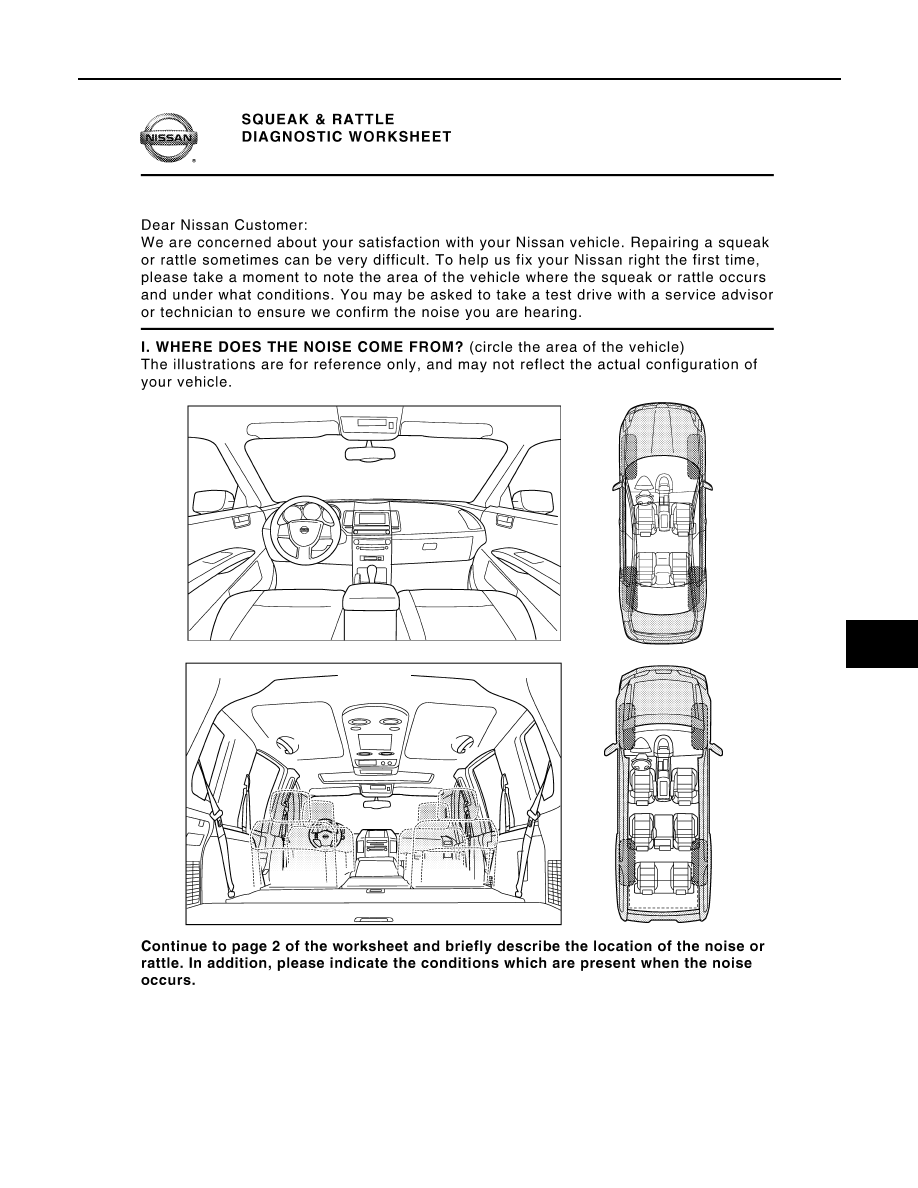Nissan Teana J32. Manual - part 998

SQUEAK AND RATTLE TROUBLE DIAGNOSES
SE-125
< SYMPTOM DIAGNOSIS >
[WITHOUT VENTILATION SEAT]
C
D
E
F
G
H
I
K
L
M
A
B
SE
N
O
P
Diagnostic Worksheet
INFOID:0000000003940142
PIIB8740E
|
|
|

SQUEAK AND RATTLE TROUBLE DIAGNOSES SE-125 < SYMPTOM DIAGNOSIS > [WITHOUT VENTILATION SEAT] C D E F G H I K L M A B SE N O P Diagnostic Worksheet INFOID:0000000003940142 PIIB8740E |